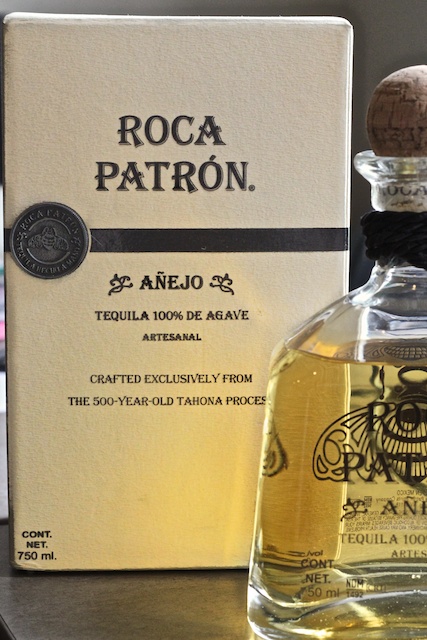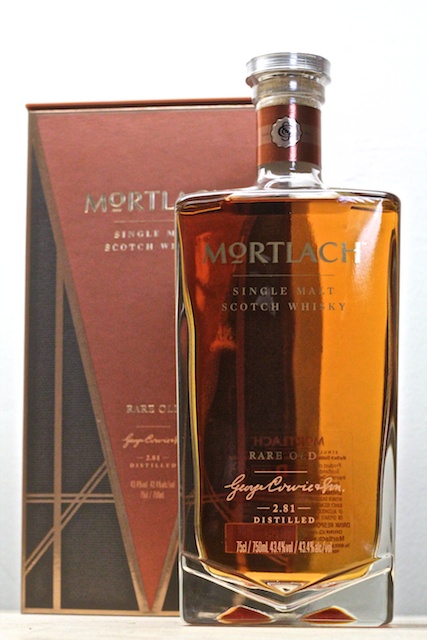Two Roads to Luxury

Booze is big business. This shouldn't be news to anyone who's gone out to a fancy cocktail bar in the past three years, or those who shop for spirits even slightly outside the everyday norm. With an absolutely gigantic new audience and more eager enthusiasts than ever before searching for the next big thing, new boutique products have been popping up like crazy as investors hope to cash in on the current era's new gold rush. Just about all of you reading this blog already know this.
Many big brands, however, were not ready for this new level of competition and they've had to adjust to the loss of market share. Some producers pushed back by leveraging relationships, while others lowered prices. Some producers created their own "craft" divisions, adding new labels to their portfolios that gave the appearance of smaller operations. There were (and always will be) a few who simply bought their competition out. Two major producers, however, faced an entirely different issue. Patron and Johnnie Walker Blue were for years seen as top-class, boutique products in a sea of more mundane brand options. They were the top shelf brands in bars and retailers around the world for their particular genre; coveted by those who considered themselves serious aficionados of liquor. In 2014, however, that's no longer the case. Patron, the industry's first boutique tequila is now seen (by me at least) as a relegated relic of the 90's, while blended whisky in general has taken a serious backseat to single malt. Both brands have seen their reputations with discerning consumers slide over the last five years as fresher faces have taken over the mantle. The question facing them now is: how should a big company react when their luxury products are no longer seen as luxury?
In the case of Patron, they've reacted as well as any big company I've seen since starting in this industry. They went out and built a better mousetrap, which is not an easy thing for large production distillers to do considering the size and scale of what they're attempting. Nevertheless, Patron just released their answer to boutique tequila in 2014: the Roca Patron series, featuring three distillates made from tajon-crushed agave rather than machine-shredded pulp. As I wrote in my post yesterday, the result is simply stunning. I hate big brand tequila because it tastes thin and utterly soulless, but I simultaneously love it when brands get their shit together and utilize their superior faculties in the name of good booze. Patron knocked it out the park with these Roca expressions. They're better than I want to admit they are, and for those looking for the entire luxury package—quality spirit, easy accessibility, instantaneous appreciation, wide recognition, great looking bottle, and elegant gift box—it simply does not get any better. Casa Dragones and Don Julio 1942 are going to get crushed by Roca Patron because the booze is superior, the packaging more authentic, and the prices significantly less. Let me further say this: I would not only feel comfortable giving my most discerning tequila customers a bottle of Roca Patron, I would be excited to do so. Here are my notes:
Roca Patron Silver Tahona Process Tequila $57.99 - The nose is a beautiful hybrid of white pepper, fruity agave, and just a hint of herbaceousness. The initial sip bursts with sweet agave notes, followed by a tangy and salty flurry of spices. The finish is elegant and clean, but it really depends on each sip. Certain moments seem to come together perfectly, like the sun coming out from behind the clouds, illuminating a perfect harmony of soft fruit, peppery spice, and savory goodness. Other sips are simply plain good, which is to say that no one will find the Roca Patron blanco anything less that tasty. Some, like myself, might be moved further into an excited state of jubilation. I have an affinity for sweet-fruited blancos like the round, and supple tequilas from NOM 1079 Jesus-Maria, and the Roca Patron blanco definitely falls into this camp. Other brands often add glycerol to simulate this texture in their blancos, but the result is usually goofy and ends up muting the aromatics. The Roca blanco is clean as a whistle, however. For a large producer to make something this refined on a larger scale is impressive. It tastes expensive.
Roca Patron Reposado Tahona Process Tequila $64.99 - To me, it's always a good sign when a reposado tequila is a pale straw color. It's an indication that some time was spent maturing in wood, but not enough to overwhelm the inherent spice. The Roca Patron reposado is so delicate and subtle that it's almost unrecognizable as a big brand product. It's not big, bold, sweet, or creamy, so how did this destined-to-be-misunderstood spirit come from Patron? The nose is a soft whisper of black pepper, citrus, and baking spices. The palate gives only the faint impression of wood aging—a kiss of vanilla, maybe—but the rest is a faint rumbling of pepper and spice with an incredibly mellow profile that is quiet enough as to not be heard. This tequila was crafted with a deft hand. Again, this is something we rarely see from big brands.
Roca Patron Anejo Tahona Process Tequila $72.99 - Those craving more wood maturation should look to the Roca Patron anejo, which would be the reposado in any other big brand tequila portfolio. The nose has more vanilla and toasted oak with a lovely hint of butterscotch, but it's still much more mild that something like the Don Julio or El Tesoro anejos. Despite the richness of the bouquet, the palate is deceptively lean. There's a sweetness from the wood, a touch of that sweet honey, but it evaporates quickly into a flutter of warm baking spices, finishing richly, but also cleanly. Herbaceous notes linger long on the palate, leaving me to think this would be great with a cigar (if I smoked cigars). Again, for the price point is lives up to expectations. It's incredibly easy to like, but those who appreciate tequila on a finer level will revel in its depth.
So there you have it. Patron took the path towards making better tequila and they definitely achieved their goal. What about Diageo, though?

I finally got to taste the new Mortlach "Rare Old" Single Malt Whisky this week and I quickly surmised that Diageo had taken an entirely different route than Patron towards luxury in the new market; which is to say they stuck to the same route that got them there in the first place. Mortlach has seen its stock rise dramatically over the last few years thanks to a number of first-fill sherry casks that lit up the independent market (one of them being a Chieftain's cask we picked out for K&L a while back). Mortlach has always been one of the crown jewels in the Diageo portfolio, but it was utilized entirely for Johnnie Walker, rather than as an individual single malt whisky.
With independent bottlers reaping the rewards of the Mortlach name, however, it was finally time for Diageo to bring those profits over to their side of the market. Diageo owns the Mortlach distillery and the Mortlach name, as well as the best, most-mature stocks of Mortlach whisky. Why not simply add a high-end, luxury-driven Mortlach expression to the marketplace and establish the brand as a distillery-direct product for discerning whisky consumers?
The resulting idea was the Mortlach Rare Old, simply the single malt version of Johnnie Walker Blue; it's a delicate, soft, easy-drinking whisky that is smoother than silk. It is not a big, chewy, intense, sherry-laden malt that mimics the profile of some of the more-beloved and revered single casks to hit the market over the last decade. It's simply Diageo's version of Macallan 18; it's their answer to what they think their luxury consumers want.
Mortlach Rare Old Single Malt Whisky 109.99 - If you're looking for smooth, effortless whisky that almost glides across the palate with ease, the the Mortlach Very Rare Whisky is the single malt of your dreams. The palate is incredibly gentle, like velvet almost, as just a hint of the raisiny, sherried flavor permeates the tongue before morphing seamlessly into soft caramel and vanilla. The result is a whisky that should please just about any casual fan of single malt looking to step up their quality into something more elegant.
What the Mortlach doesn't do, however, is make a case to more-modern single malt fans who are looking for something new and intriguing in the Diageo realm (which is a pretty big realm). There's no doubt after your first sip of Mortlach that Diageo is playing the numbers game here, banking on the fact that there are more casual drinkers out there than there are diehards (which is absolutely the case).
And that's the ultimate question if you're a big company deciding on a luxury product: do you cater to the insiders or the outsiders? The numbers game is with the casual drinkers, but the credibility lies with the more devout.
Which road will lead to better sales? We'll have to see which path makes all the difference.
-David Driscoll
